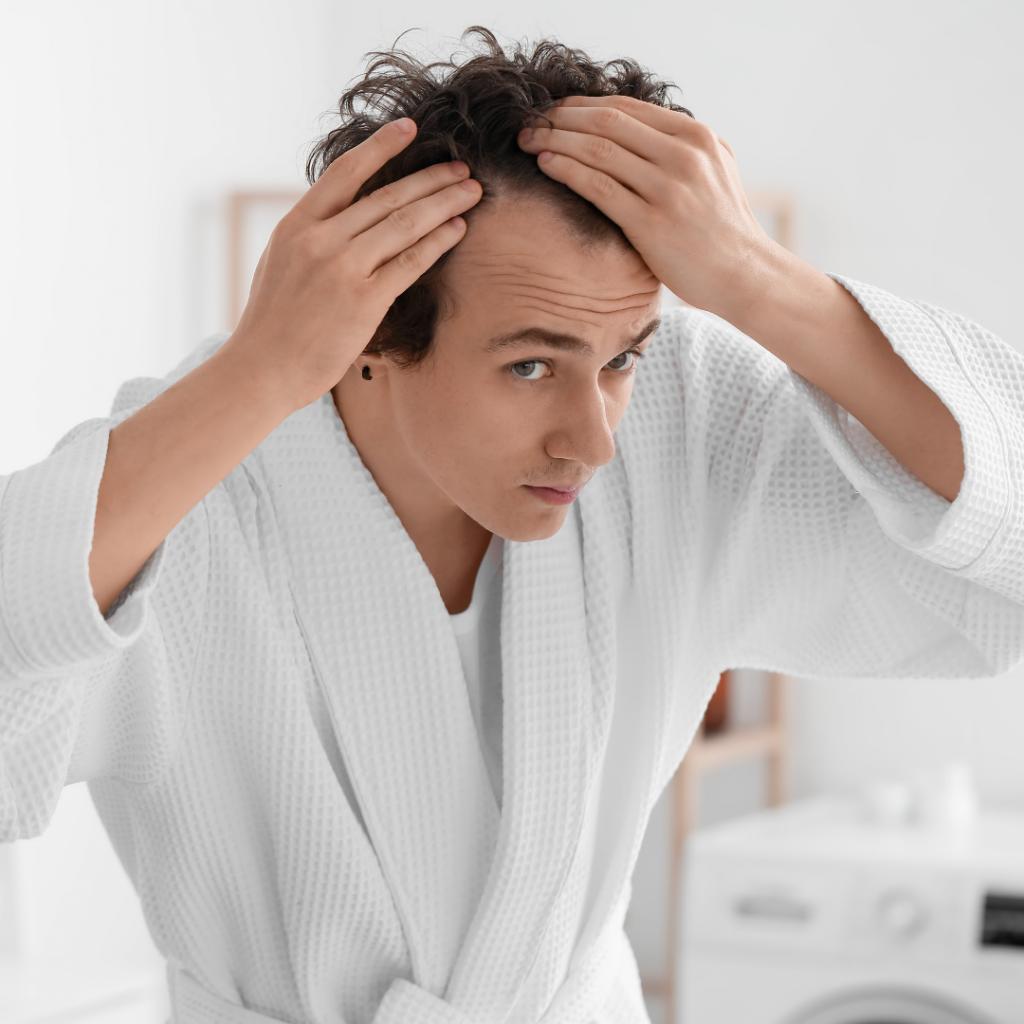No products in the cart.
March 7, 2024

Balding in your 20s can feel like an isolated journey, often fraught with confusion, frustration, and a dent in self-confidence. But you’re not alone. Many young adults face premature hair loss, and while genetics play a significant role, lifestyle, stress, and dietary factors can also influence the health of your hair. This guide is dedicated to shedding light on this often taboo topic, offering a blend of support, practical advice, and a glimpse into the myriad ways to approach and manage balding.
Understanding Balding:
The first step in navigating hair loss is understanding its roots—pun intended. For many, balding stems from a genetic predisposition known as androgenetic alopecia or male/female pattern baldness, which can kick in as early as your late teens or early 20s. Hormonal changes, nutritional deficiencies, and certain medical conditions can also contribute to shedding strands. Recognizing the cause is crucial, as it helps tailor the most effective treatment approach.
Lifestyle and Wellness:
A holistic approach to wellness can significantly impact the health of your hair. Incorporating a balanced diet rich in vitamins and minerals, such as iron, vitamin D, omega-3 fatty acids, and proteins, can nurture both your body and your hair. Regular exercise, adequate sleep, and stress management techniques like meditation or yoga can also play a vital role in minimizing hair loss.
Hair Loss Treatments:
There’s a plethora of options out there, from over-the-counter solutions like minoxidil (Rogaine) to prescription medications such as finasteride (Propecia) for men. These treatments have shown efficacy in slowing hair loss and, in some cases, even regrowing hair. Natural remedies, though more anecdotal in their effectiveness, offer a gentler alternative, with options ranging from essential oils to herbal supplements. For those considering more definitive solutions, hair transplant surgery has evolved significantly, offering more natural results with less downtime.
Style and Grooming:
Changing your hairstyle or adopting new grooming practices can make a big difference in how you perceive your hair and yourself. Shorter haircuts can create the illusion of more volume, and certain styling products can add texture and fullness to thinning hair. For those open to headwear, hats and caps not only offer a stylish accessory but also protect your scalp from the sun.
Emotional Support and Resources:
Perhaps the most critical aspect of dealing with balding is addressing the psychological impact. It’s normal to feel a range of emotions, from denial to anger to acceptance. Connecting with others who are going through similar experiences can provide a sense of community and understanding. Don’t hesitate to seek professional counseling if you’re struggling to cope—mental and emotional health is just as important as physical health.
Closing Thoughts:
Balding in your 20s is undeniably challenging, but it doesn’t define you or your potential. By embracing this change, seeking solutions that resonate with your lifestyle, and connecting with a supportive community, you can navigate this journey with confidence and grace. Remember, your hair—or lack thereof—doesn’t determine your worth. It’s your resilience, your character, and your actions that truly matter.

We opened our clinic in Aventura, FL to offer top quality hair restorations at competitive prices.
Follow us on :
Copyright © 2024 American Mane | Powered by American Mane